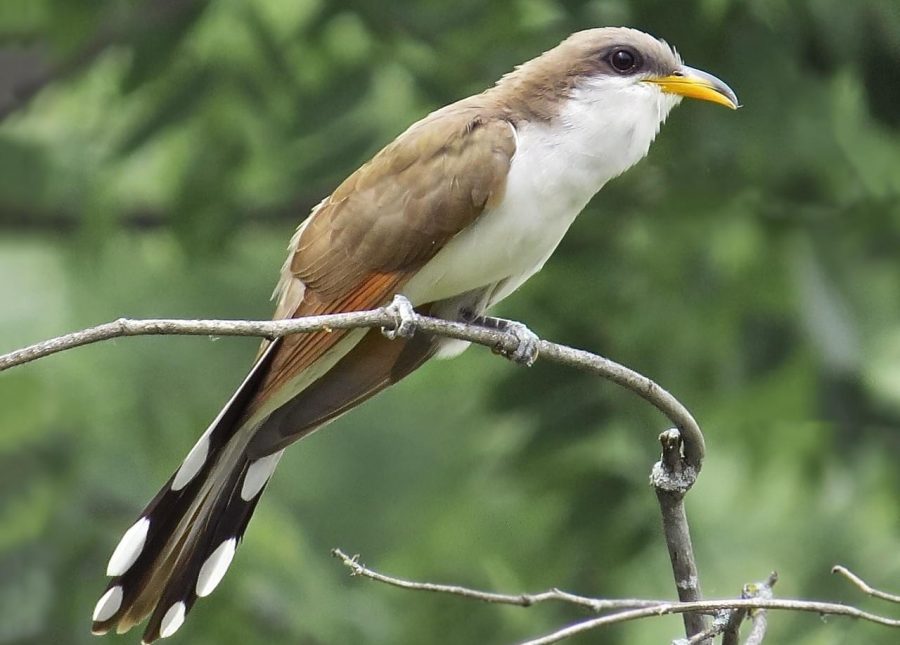
YELLOW-BILLED CUCKOO
This species is often seen in the wooded birding areas in Essex County during spring migration. Yellow-billed Cuckoos can be elusive and unlike other songbirds, are not in constant motion. Cuckoos are known for sitting very still in the trees. The bold black and white spotting in the tail is distinctive and often how birders pick out this species in the foliage.
Any of the forested locations with Black Walnut and Willows are great places to look for this species during the breeding season. These species of trees often attract caterpillars, a favourite food of cuckoos. At Point Pelee National Park, check the willows trees edging the marsh near the observation tower and along the north section of DeLaurier Trail. Listen for their distinct “kaw, kaw, kaw” call – they can be elusive and are often best found using song.
A common, but slow-moving and secretive denizen of woodlands, the Yellow-billed Cuckoo eats large quantities of hairy caterpillars. Its loud call is heard far more frequently than the bird is actually seen.
Adult Description
Slender, medium-sized bird.
Long tail with large white spots along edges.
Dull brown back.
Underside whitish.
Bill black above, with yellow lower mandible.
Rufous in wings.
Immature Description
Resembles adult, but with less distinct tail pattern.
*Image and description were sourced from: allaboutbirds.org

